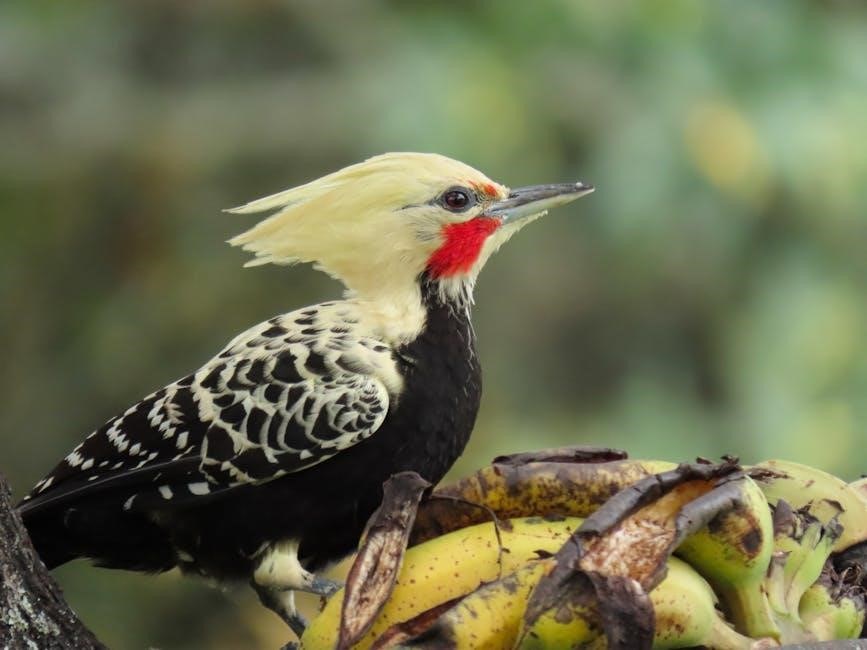
This unique guide offers a humorous yet dark perspective on bird behavior‚ blending witty descriptions with striking illustrations to highlight troubled bird species.
Perfect for bird enthusiasts and those with a dark sense of humor‚ it explores the quirky‚ often disturbing world of birds with mental and behavioral challenges.
Combining short stories‚ factual insights‚ and vibrant visuals‚ the guide paints a fascinating portrait of birds that defy conventional norms.
Welcome to the fascinating yet unsettling world of troubled birds‚ where feathered creatures exhibit behaviors that defy conventional norms. These birds‚ often misunderstood‚ showcase traits like aggression‚ erratic nesting habits‚ and disorienting migration patterns. The guide delves into their unique characteristics‚ blending dark humor with factual insights to create an engaging and thought-provoking experience. Troubled birds‚ whether psychotic‚ violent‚ or mentally unstable‚ offer a glimpse into nature’s complexities. This introduction sets the stage for exploring these avian anomalies‚ encouraging readers to approach them with curiosity and compassion. By examining their habits and challenges‚ we gain a deeper understanding of these birds and their place in the natural world.
Characteristics of Troubled Bird Species
Troubled bird species often exhibit unusual and erratic behaviors that set them apart from their more stable counterparts. These birds may display aggression‚ erratic nesting habits‚ or disorienting migration patterns. Some species‚ like the mincing mockingbird‚ are known for their mentally unstable traits‚ while others may appear violent or psychotic. These characteristics are often rooted in environmental pressures‚ genetic predispositions‚ or social interactions gone awry. Troubled birds may also show signs of physical debilitation or unusual vocalizations‚ adding to their enigmatic nature. Understanding these traits is key to identifying and appreciating these avian anomalies. This guide explores these characteristics in detail‚ offering insights into the fascinating yet often dark world of troubled birds.
Historical Context of Bird Behavior
The study of bird behavior has a rich history‚ with early naturalists documenting unusual avian traits. Over centuries‚ observations revealed patterns of aggression‚ nesting challenges‚ and migratory disorientation in certain species. These behaviors were often linked to environmental changes‚ evolutionary pressures‚ or social dynamics. Historical accounts suggest that some bird species have consistently exhibited erratic or violent tendencies‚ earning them reputations as “troubled.” This historical context provides a foundation for understanding the complexities of bird behavior‚ highlighting how certain species have evolved unique coping mechanisms or developed mental instabilities over time. By examining past observations‚ modern researchers can better interpret the behaviors of troubled birds and their place within ecosystems.
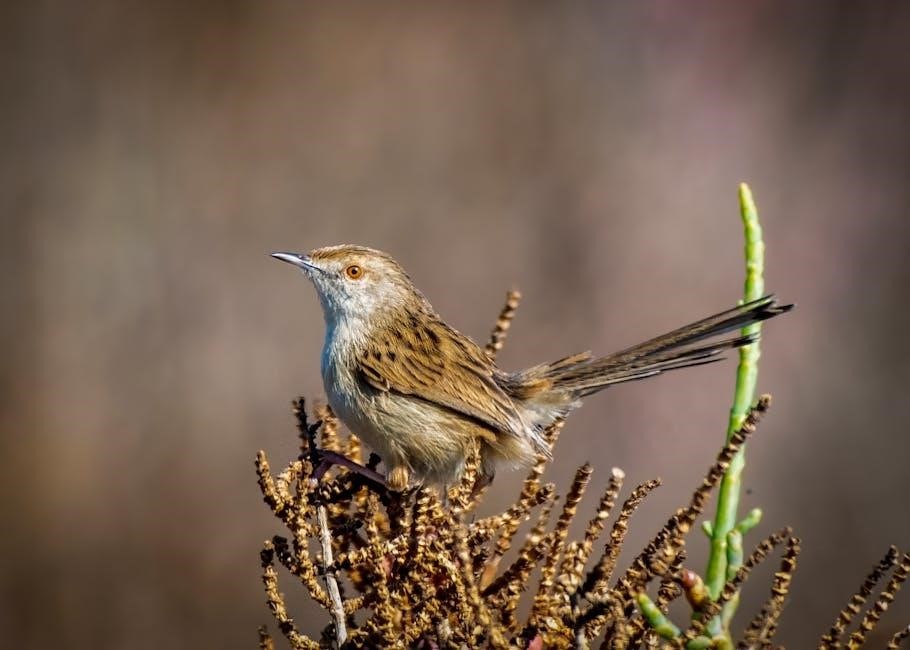
Understanding Troubled Bird Behavior
Exploring the complex patterns of aggression‚ nesting challenges‚ and migratory disorientation in birds reveals deeper insights into their emotional and psychological struggles‚ shaping their unique behaviors.
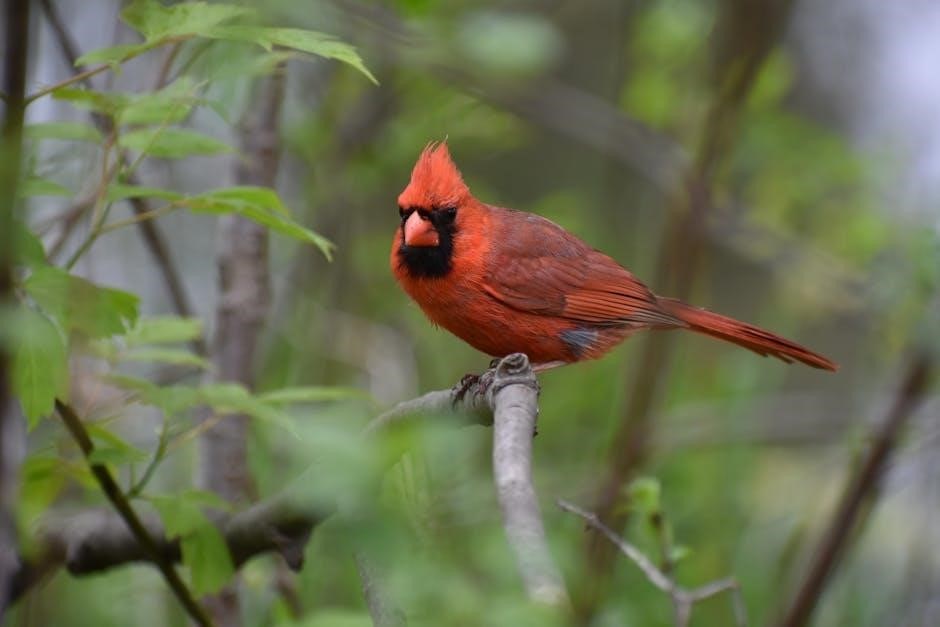
Aggressive Behavior in Birds
Aggressive behavior in birds is often a sign of underlying psychological distress or territorial disputes. Some species exhibit extreme violence‚ attacking reflections or even humans‚ driven by misplaced instincts or mental instability.
Such behavior is highlighted in the Mincing Mockingbird guide‚ which humorously categorizes birds based on their aggression levels. From psychotic outbursts to relentless territorial disputes‚ these birds showcase a darker side of avian nature.
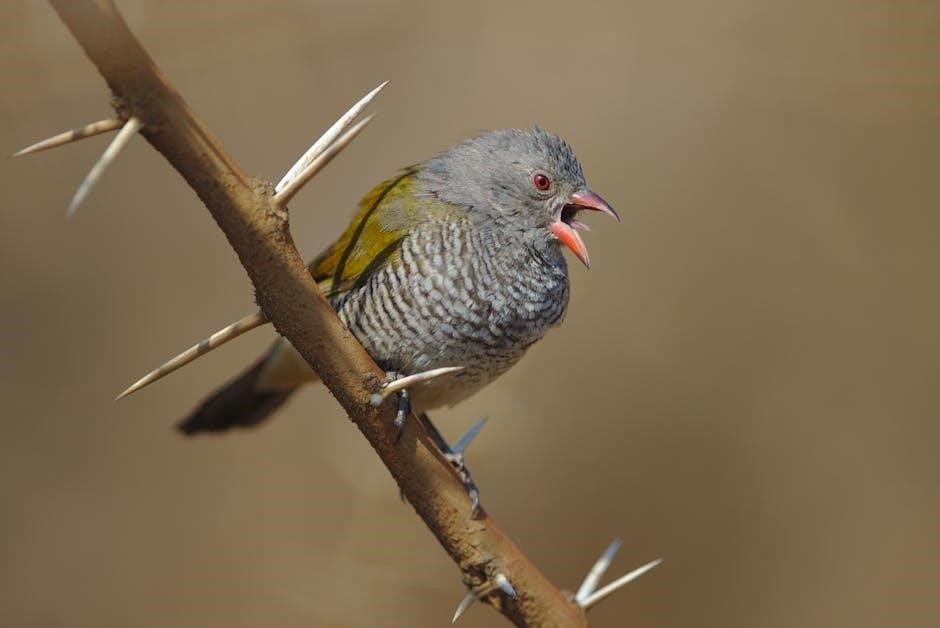
The guide uses dark humor to illustrate how certain species‚ like the mincing mockingbird‚ embody troubled behavior. By blending factual observations with witty descriptions‚ it offers a unique perspective on why some birds act out aggressively.
Understanding these patterns helps birdwatchers and researchers identify and approach troubled species with caution‚ adding depth to the study of bird behavior.
Nesting and Breeding Challenges
Troubled birds often face significant challenges in nesting and breeding‚ reflecting their mental and emotional instability. Many species exhibit abnormal behaviors‚ such as building nests in dangerous locations or neglecting their young.
Some birds may even abandon their nests entirely‚ while others become overly aggressive in defending their territory‚ leading to conflicts with other birds or predators. These struggles highlight the deeper psychological issues plaguing troubled bird species.
The Mincing Mockingbird guide humorously illustrates these challenges‚ blending dark humor with factual observations. By exploring these breeding difficulties‚ the guide sheds light on the complex and often tragic lives of these birds‚ making their stories both captivating and heartbreaking.
Migratory Problems and Disorientation
Migratory issues are a common struggle among troubled birds‚ often leading to disorientation and unexpected detours. Many species fail to follow traditional migration patterns‚ wandering into unfamiliar territories or getting lost along the way.
Some birds exhibit unusual behaviors‚ such as flying in the wrong direction or refusing to migrate altogether‚ further complicating their survival. These challenges are frequently linked to their mental instability‚ making migration a particularly daunting task.
The guide highlights these migratory mishaps with dark humor‚ illustrating how troubled birds navigate their chaotic world. By exploring these disorienting journeys‚ the guide offers a unique perspective on the struggles faced by these birds‚ blending tragedy with witty observations.

Identifying Troubled Bird Species
This guide provides a humorous yet insightful approach to recognizing birds with behavioral issues‚ using vivid illustrations and dark humor to highlight their unique characteristics.
From psychotic to violent species‚ the guide equips readers with the tools to identify and understand these troubled birds‚ blending factual descriptions with witty storytelling.
The Mincing Mockingbird: A Symbol of Troubled Birds
The Mincing Mockingbird stands as a quintessential symbol of troubled bird species‚ embodying erratic behavior and a darkly comedic personality. Known for its unsettling antics‚ this bird is often depicted as a mascot for the guide‚ representing the quirky and disturbed nature of its kin. Its reputation for mental instability and unpredictable actions makes it a focal point in the guide’s humorous yet eerie narrative.
Through vivid illustrations and witty descriptions‚ the Mincing Mockingbird is portrayed as a bird on the edge‚ offering readers a glimpse into its troubled psyche. Its story serves as a gateway to understanding the broader spectrum of mentally unstable bird species‚ blending humor with a touch of macabre charm.
Psychotic and Violent Bird Species
Psychotic and violent bird species are a fascinating yet unsettling focus of the guide‚ showcasing birds with extreme behavioral issues. These birds often exhibit erratic aggression‚ territorial disputes‚ and even bizarre mating rituals. The Mincing Mockingbird‚ for instance‚ is known for its relentless attacks on perceived rivals‚ including mirrors and windows‚ reflecting its troubled psyche.
The guide highlights these species with dark humor‚ offering vivid descriptions of their violent tendencies and mental instability. It serves as both a warning and a quirky encyclopedia‚ helping readers identify and avoid these unpredictable creatures. The blend of factual insights and macabre wit makes these birds both terrifying and oddly captivating.
Recognizing Mentally Unstable Birds
Mentally unstable birds often exhibit erratic behavior‚ such as excessive aggression‚ repetitive actions‚ or unusual vocalizations. These birds may appear disheveled or act unpredictably‚ making them stand out from their peers. The guide provides tips on identifying such birds‚ including their abnormal patterns of flight‚ feeding habits‚ and social interactions.
For example‚ the Mincing Mockingbird is known for its obsessive attacks on reflections‚ while some species of falcons display disoriented flight paths. The guide humorously categorizes these behaviors‚ offering a mix of factual observations and dark humor. By recognizing these traits‚ readers can better understand and avoid birds that may pose a threat or simply behave bizarrely.
The Mincing Mockingbird Guide to Troubled Birds
The guide humorously explores disturbed bird species‚ blending dark humor with vivid illustrations to highlight their quirky‚ often disturbing behaviors and mental challenges.
Overview of the Guide
The Mincing Mockingbird Guide to Troubled Birds is a unique‚ darkly humorous field guide that explores the quirky and often disturbing world of bird behavior.
Featuring vivid illustrations and witty descriptions‚ the guide helps readers identify and understand bird species exhibiting psychotic‚ violent‚ or mentally unstable traits.
Designed as a pocket-sized companion‚ it blends factual insights with fictional anecdotes‚ creating an engaging and entertaining experience for bird enthusiasts and dark humor lovers alike.
The guide is structured into sections that highlight troubled birds‚ their habitats‚ and migratory patterns‚ making it both informative and irreverent.
With its sharp wit and eye-catching visuals‚ the guide has become a cult favorite‚ offering a fresh perspective on the avian world.
It also includes short stories‚ memes‚ and postcard sets‚ further enhancing its appeal as a gift for bird lovers with a sense of humor.
Author and Illustrator Insights
The Mincing Mockingbird Guide to Troubled Birds is crafted by a talented author and illustrator duo known for their unique blend of dark humor and scientific curiosity.
The author’s witty prose brings troubled bird species to life‚ combining fictional anecdotes with factual observations to create a compelling narrative.
The illustrator’s vibrant‚ often surreal artwork complements the text‚ capturing the quirky and disturbed personalities of the birds in vivid detail.
Together‚ they have created a guide that not only informs but also entertains‚ making it a standout in the field of bird literature.
Their collaboration reflects a shared passion for exploring the unconventional side of bird behavior‚ offering readers a fresh and irreverent perspective.
Unique Features of the Guide
The Mincing Mockingbird Guide to Troubled Birds stands out with its blend of dark humor and detailed insights‚ offering readers a unique perspective on bird behavior.
It features striking illustrations that bring troubled bird species to life‚ accompanied by witty descriptions and fictional anecdotes that highlight their quirky traits.
The guide includes a postcard set with 50 designs‚ allowing readers to share the humor and charm of these birds with others.
Short stories and memes add an entertaining twist‚ making the guide both informative and engaging for bird enthusiasts and humor lovers alike.
Its compact‚ pocket-friendly design makes it easy to carry‚ perfect for quick reference or gift-giving to bird lovers with a sense of humor.
Overall‚ the guide’s unique blend of art‚ humor‚ and factual content sets it apart as a must-have for those fascinated by the unconventional side of bird life.
Troubled Birds in North America
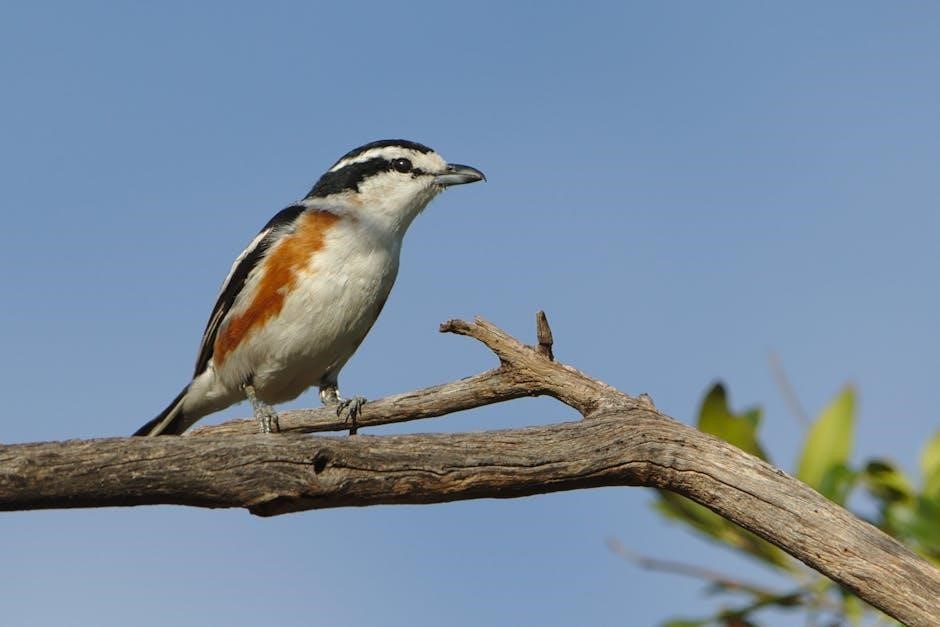
This section explores the geographical distribution and unique behaviors of troubled bird species across North America‚ offering insights into their habitats and seasonal patterns.
Geographical Distribution
The troubled birds of North America are scattered across diverse regions‚ with some species thriving in urban areas while others inhabit remote wilderness. Their distribution is influenced by habitat availability‚ food sources‚ and climate conditions. For instance‚ the mincing mockingbird is commonly found in the southeastern United States‚ where its aggressive behavior is well-documented. Other disturbed species‚ such as the psychotic woodpecker‚ are more prevalent in the northern forests. This geographical spread highlights the adaptability of these birds‚ allowing them to cope with various environmental challenges. Their presence often sparks both fascination and concern among birdwatchers and researchers alike.
Habitat Preferences of Troubled Birds
Troubled birds exhibit a wide range of habitat preferences‚ reflecting their adaptability to diverse environments. Some species‚ like the mincing mockingbird‚ thrive in urban centers‚ where their aggressive behavior often manifests in confrontations with humans. Others‚ such as the psychotic woodpecker‚ prefer dense forests‚ where their erratic drumming patterns disrupt the natural peace. Mentally unstable crows‚ on the other hand‚ are drawn to open fields and wetlands‚ where they engage in bizarre social interactions. These birds often inhabit areas with abundant food sources‚ enabling them to sustain their unusual lifestyles. Interestingly‚ some troubled birds even adapt to backyard environments‚ making them a fascination—and sometimes a nuisance—for birdwatchers. Their habitat choices underscore their resilience and ability to coexist in both natural and human-altered landscapes.
Seasonal Behavior Patterns
Troubled birds exhibit distinct seasonal behavior patterns that vary according to environmental changes. During spring‚ many species display heightened aggression‚ particularly during mating seasons‚ as they compete for mates and territory. Summer months often see increased territorial disputes‚ with birds like the mincing mockingbird becoming notoriously defensive. In fall‚ migratory troubled birds may experience disorientation‚ leading to erratic flight patterns and unintended detours. Winter brings unique challenges‚ as some species struggle to adapt‚ showcasing abnormal foraging behaviors or unusual flocking tendencies. These seasonal shifts highlight the unpredictable nature of troubled birds‚ making their behavior a fascinating yet complex subject of study. Observing these patterns provides insight into their mental and emotional struggles‚ offering a deeper understanding of their troubled existence. Seasonal variations remain a key aspect of their behavior‚ underscoring their adaptability and resilience.
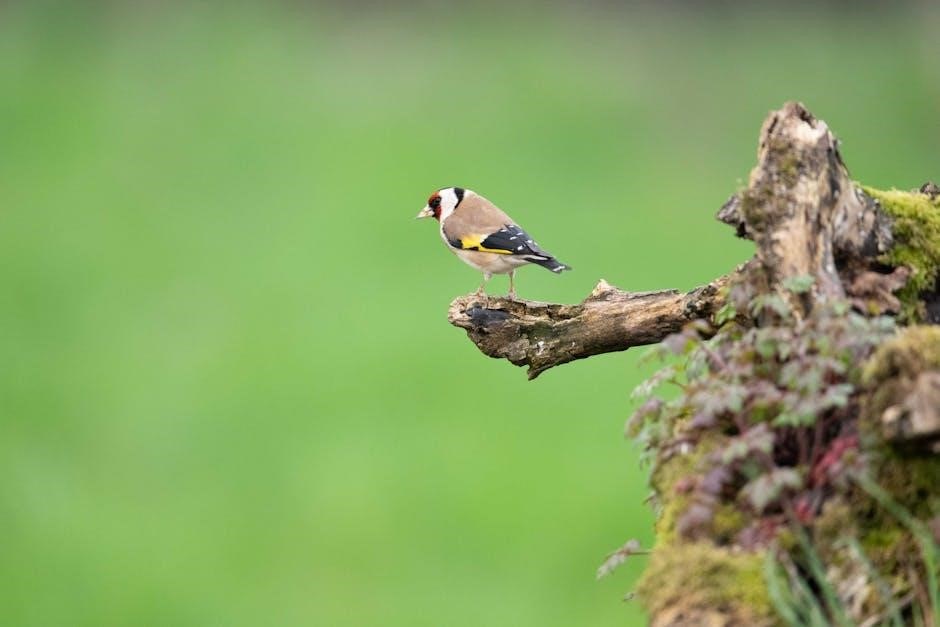
Humor and DarkThemes in the Guide
The guide humorously explores the darker side of bird behavior through witty descriptions and quirky illustrations‚ blending dark themes with humor‚ appealing to those with a dark sense of humor.
Dark Humor in Bird Descriptions
The guide cleverly employs dark humor to depict troubled birds‚ highlighting their quirky‚ often disturbing behaviors with witty descriptions that blend absurdity and reality.
By painting birds as mentally unstable or violent‚ the text creates a humorous yet unsettling narrative‚ making readers laugh while acknowledging the bizarre traits of these avian characters.
Dark humor is balanced with factual insights‚ ensuring the guide remains entertaining while shedding light on the complexities of bird behavior and their often-troubled nature.
Illustrations and Visual Storytelling
The guide is enriched with vibrant‚ whimsical illustrations that bring troubled birds to life‚ blending dark humor with visual storytelling to captivate readers.
Each species is depicted with unique‚ often exaggerated traits‚ reflecting their disturbed behaviors and quirky personalities through detailed‚ expressive artwork.
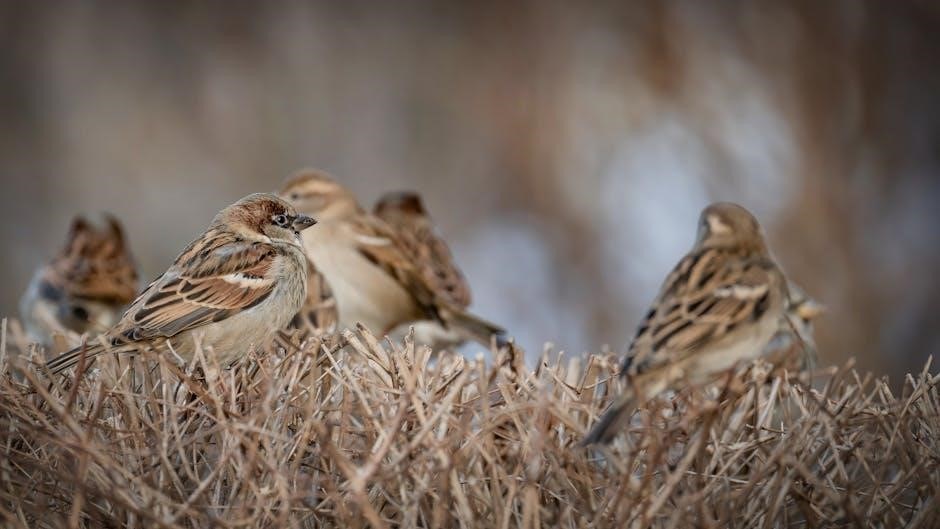
The visuals complement the witty descriptions‚ creating a seamless blend of humor and insight that makes the guide both entertaining and informative.
By combining striking imagery with clever narratives‚ the illustrations enhance the reader’s understanding of these troubled birds‚ making their stories unforgettable and engaging.
Short Stories and Memes Featuring Troubled Birds
Engaging short stories and humorous memes add a lighthearted twist‚ showcasing the eccentric behaviors of troubled birds in relatable and entertaining scenarios.
These narratives highlight the birds’ quirks‚ from aggressive interactions to bizarre mating rituals‚ offering readers a chuckle while shedding light on their unique traits.
Memes cleverly encapsulate the essence of each species’ struggles‚ making the guide a delightful mix of humor and insight into the avian world.
By blending fiction with fact‚ these stories and memes create a captivating experience‚ making the guide a must-read for anyone fascinated by birds with personality.
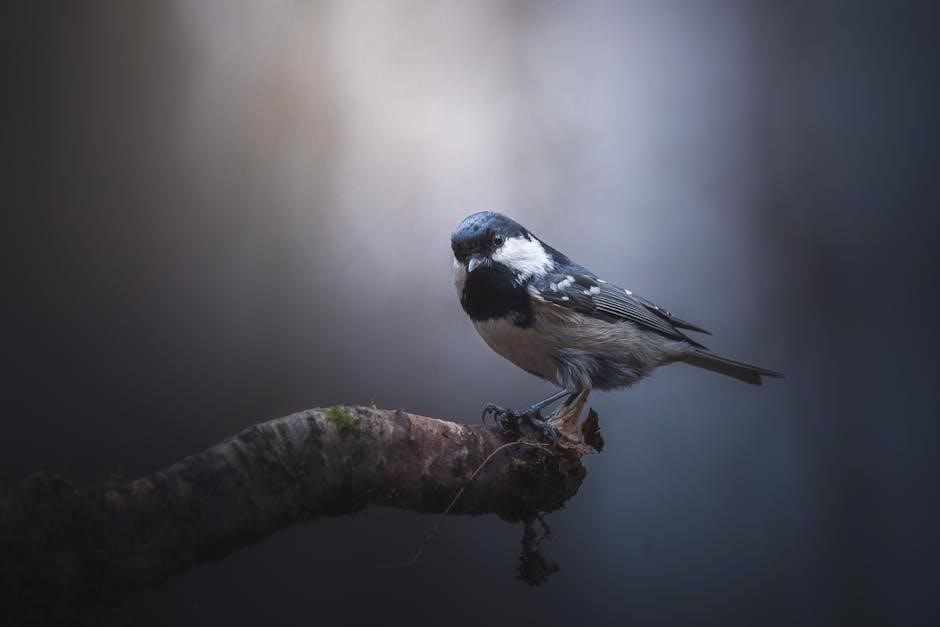
Conservation and Support
Efforts to rehabilitate troubled birds focus on providing care and raising awareness about their unique challenges and needs.
Public campaigns and dedicated researchers play a crucial role in supporting these birds and promoting their well-being in diverse environments.
Efforts to Rehabilitate Troubled Birds
Rehabilitation programs for troubled birds focus on addressing behavioral and psychological issues through specialized care and tailored interventions.
Experts use techniques like environmental enrichment‚ nutritional therapy‚ and cognitive exercises to help birds overcome mental and physical challenges.
Conservation centers often collaborate with wildlife experts to create safe spaces for these birds‚ ensuring they receive the support needed for recovery.
Public awareness campaigns also play a vital role in educating communities about the importance of compassionate care for troubled bird species.
By combining scientific approaches with community involvement‚ these efforts aim to improve the lives of birds exhibiting disturbed behaviors.
Public Awareness Campaigns
Public awareness campaigns play a crucial role in educating communities about the plight of troubled birds‚ fostering empathy and understanding.
These campaigns often utilize humor and storytelling‚ as seen in the Mincing Mockingbird Guide‚ to engage audiences and highlight the unique challenges faced by these birds.
By sharing memes‚ anecdotes‚ and illustrations‚ the guide humanizes troubled birds‚ making their struggles relatable and entertaining for a broad audience.
Such efforts encourage people to view these birds not as nuisances but as creatures deserving compassion and support.
Through creative outreach‚ public awareness campaigns help reduce stigma and promote conservation efforts for mentally unstable bird species.
The Role of Birdwatchers and Researchers
Birdwatchers and researchers play a vital role in identifying and studying troubled bird species‚ providing crucial insights into their behavior and habitats.
Through meticulous observations‚ they gather data on aggressive patterns‚ nesting challenges‚ and migratory disorientation‚ helping to better understand these birds’ unique struggles.
Their findings often contribute to conservation efforts and rehabilitation programs‚ ensuring troubled birds receive the support they need to thrive.
Researchers also collaborate with illustrators and writers‚ such as those behind the Mincing Mockingbird Guide‚ to create engaging content that educates the public about these birds’ quirks and challenges.
By bridging the gap between scientific study and public awareness‚ birdwatchers and researchers help foster compassion and understanding for these fascinating yet troubled creatures.
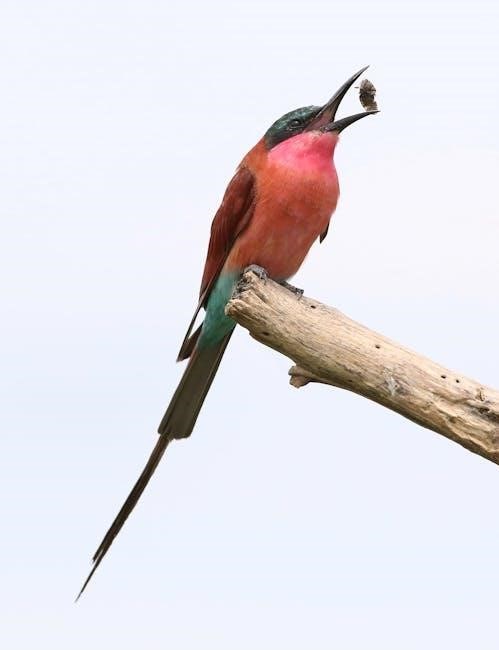
The Mincing Mockingbird Guide to Troubled Birds offers a unique blend of humor and insight‚ challenging readers to view bird behavior through a darker‚ more whimsical lens.
Final Thoughts on Troubled Birds
The Mincing Mockingbird Guide to Troubled Birds offers a unique blend of dark humor and insightful commentary on bird behavior. By highlighting species with psychotic‚ violent‚ or mentally unstable traits‚ the guide challenges traditional bird-watching narratives. It serves as both an entertaining gag gift and a thought-provoking exploration of nature’s quirks. The guide’s illustrations and short stories add depth‚ making it a standout piece for bird enthusiasts and humor lovers alike. While it may not be for everyone‚ its bold approach encourages readers to view birds in a new‚ unconventional light. Ultimately‚ it reminds us that even in the natural world‚ not everything is as serene as it seems. The guide’s success lies in its ability to provoke laughter and curiosity while sparking important conversations about wildlife behavior.
Encouraging Compassion and Understanding
While the guide humorously highlights the darker side of bird behavior‚ it also serves as a reminder to approach wildlife with compassion. Troubled birds‚ like all creatures‚ deserve understanding and empathy. Their erratic actions often stem from environmental pressures‚ mental health issues‚ or societal influences. By acknowledging these challenges‚ we foster a deeper connection with nature. The guide encourages readers to view birds not just as subjects of amusement but as complex beings worthy of kindness. This perspective promotes a more inclusive and compassionate world‚ where even the most troubled birds find empathy and support. Ultimately‚ the guide inspires us to embrace the diversity of life‚ appreciating both the beauty and the quirks of our feathered friends.





